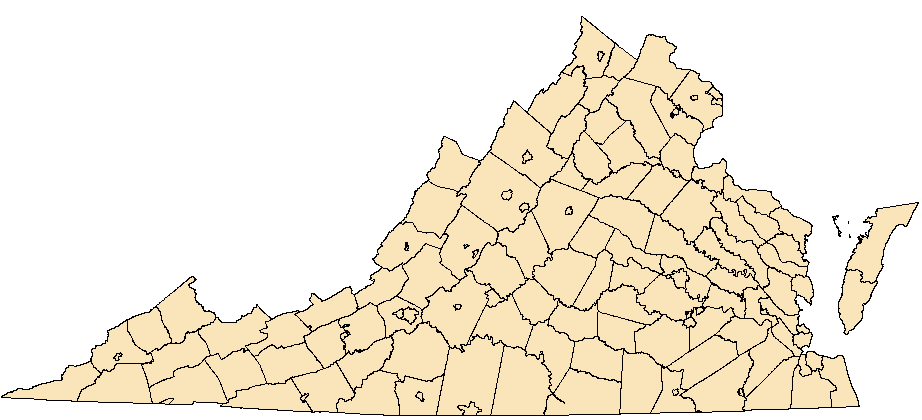Aeshna constricta Say, 1839
Lance-tipped Darner
NatureServe Global Rank: G5
Virginia State Rank: SH
VA DGIF Tier: IV
Federal Legal Status: None
Virginia Legal Status: None
Description: The Lance-tipped Darner is a "mosaic" darner with a complex pattern of blue markings on a dark abdomen. Thorax with two blueish to yellow-green, broad, vertical stripes on the side, the posterior stripe is thickened along the top. The wings may be lightly colored with amber. The size is 68-72 mm, (2.7-2.8 inches).
Similar species: In Virginia, the Shadow Darner (A. umbrosa) is far more common and widespread. It can be readily separated from the Lance-tipped Darner by its straight and narrow thoracic stripes, and by the much smaller mosaic patterns of the abdomen. In hand, the male Lance-tipped Darner's upper terminal appendages are paddle-shaped with a lance-like downward projection. The Black-tipped Darner (A. tuberculifera) lacks blue markings on the last abdominal segment.
North American Range: The Lance-tipped Darner can be found all across the northern United States and southern Canada. In Virginia, it is recorded only from Augusta and Frederick Counties (Carle, 1982).
VA Observations by Locality: Augusta | Frederick



Flight season and broods: The known flight season in Virginia for the Lance-tipped Darner ranges from 2 - 29 October, but the flight season in New Jersey ranges from early July into the first days of November.
Aquatic Habitat: The Lance-tipped Darner can be found in marshy ponds and lakes that may dry up in late summer.
Behavior and Ecology: Lance-tipped Darner females oviposit into stems and leaves of cattails, iris, or other larger aquatic vegetation. They may be found in mixed species swarms, especially late in the day, with other species of darners and emeralds.
Population trend and potential threats: The Lance-tipped Darner is a common species farther north, but there are no recent records for Virginia.
Management practices: Monitor and protect occupied habitat.
References: Carle, F.L., 1982. A contribution to the knowledge of the Odonata. Ph.D. thesis, Virginia Polytechnic Institute and State University, Blacksburg, Virginia. 1,095 pp.
Nikula, B., J. Loose, and M. Burne. 2003. A Field Guide to the Dragonflies and Damselflies of Massachusetts. Massachusetts Division of Fisheries and Wildlife, Natural Heritage & Endangered Species Program. Westborough, Massachusetts. 197 pp.
Paulson, Dennis. 2011. Dragonflies and Damselflies of the East. Princeton University Press. Princeton and Oxford. 538 pp.
Roble, Steven M. 2011. Dragonflies of Virginia- Flight dates. Unpub.
Virginia Department of Conservation and Recreation, Natural Heritage Program, 600 E. Main St., 24th Floor, Richmond, VA 23219
This atlas was compiled
by the VA Natural Heritage Program with funds provided by the VA Dept. of Game and Inland Fisheries through a state wildlife grant
from U.S. Fish and Wildlife Service
Questions/Comments? Check the contacts page |
Internet Privacy Policy Statement
Last Modified: Friday, 26 February 2021, 03:21:56 PM